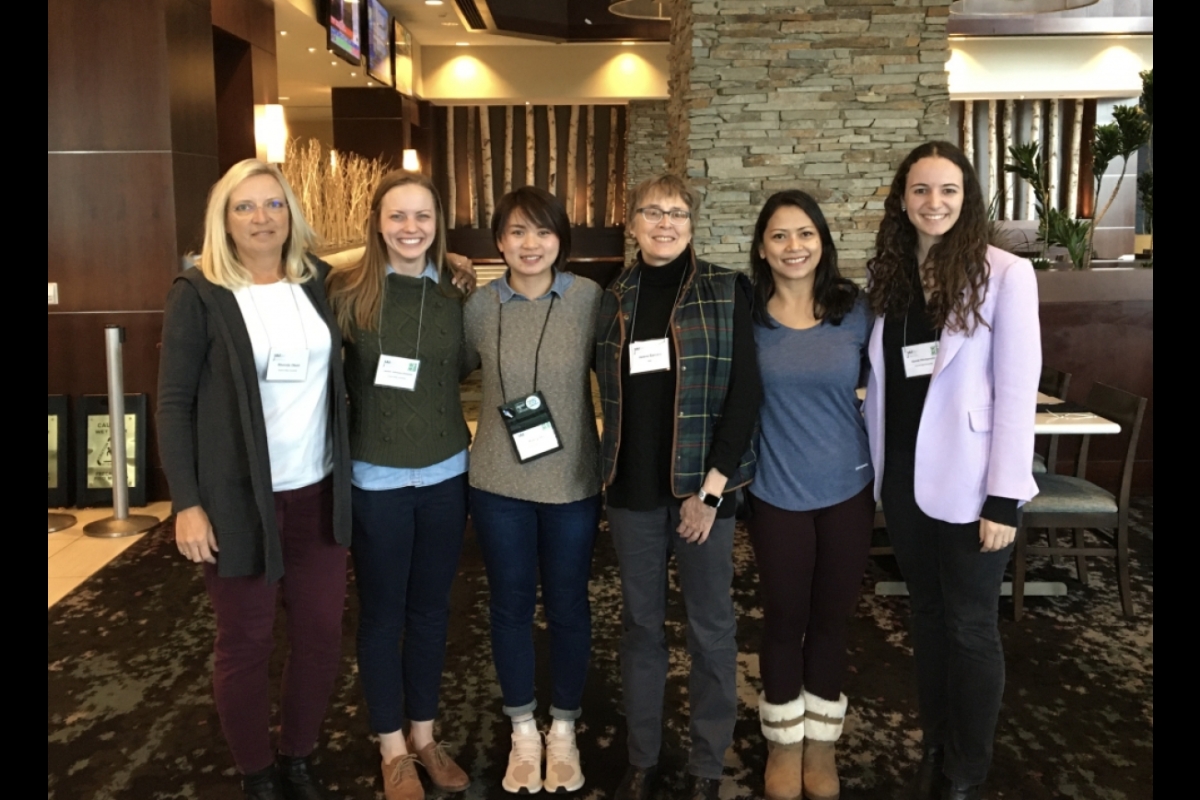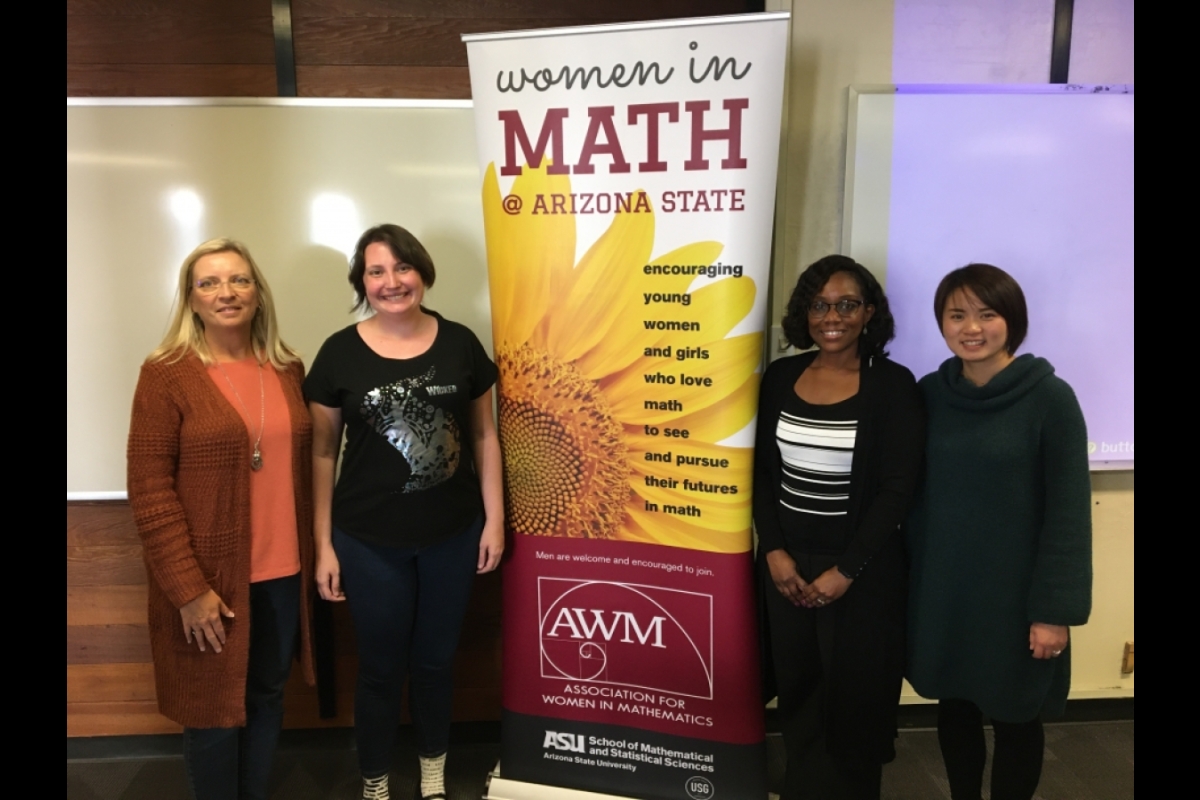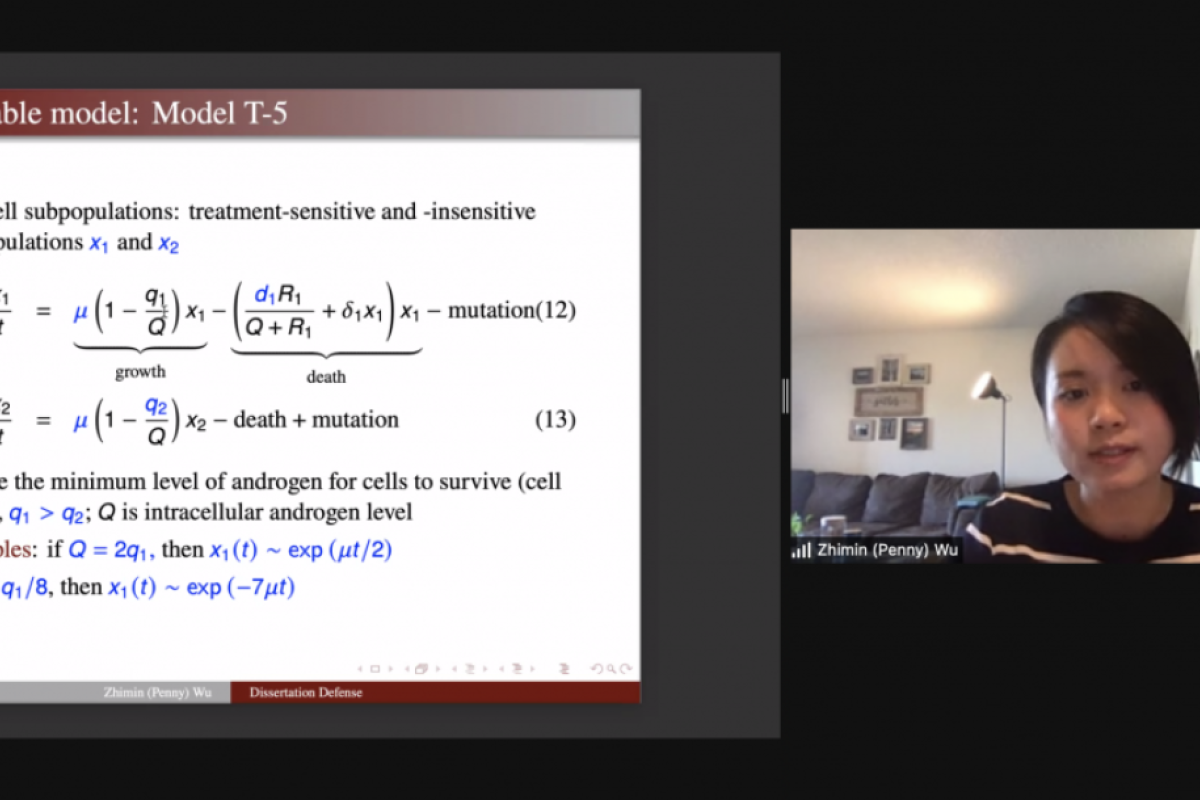First-gen international student earns her PhD in applied math, lands job as AI scientist

Zhimin Penny Wu graduates this week with a PhD in applied mathematics from the School of Mathematical and Statistical Sciences.
Editor's note: This story is part of a series of profiles of notable fall 2021 graduates.
Zhimin Penny Wu graduates this week with a PhD in applied mathematics from the School of Mathematical and Statistical Sciences.
Wu’s dissertation, “Data Assimilation and Uncertainty Quantification with Reduced-Order Models,” uses data assimilation to model the northern polar vortex, and uses the same mathematical approach to model prostate cancer treatments.
Data assimilation is routinely used in numerical weather forecasting. As a rough example of the process, suppose that the forecast at Phoenix Sky Harbor airport calls for a temperature of 75 F at 3 p.m. Then supposed that at 3 p.m. the actual temperature is recorded at 77 F. Then the forecast was too cold, and the weather model needs to be updated with the actual temperature.
This same process needs to be done at all the other weather stations, too. However, the weather model needs to follow the atmosphere up, and we don’t have temperature measurements at 1,000 feet, 2,000 feet, 3,000 feet, etc. above Sky Harbor airport at 3 p.m. to compare with the weather model. We need a mathematical approach to make educated guesses about how to update the model temperatures at those heights, given that they, too, are probably too cool.
“Penny's research applied this mathematical approach to a model of the northern polar vortex , which you can think of as part of the jet stream,” said Eric Kostelich, President’s Professor of mathematics and co-chair of Wu’s committee. “When the vortex encircles the arctic, then the polar regions are very cold and the weather in the U.S., Europe and southern Canada is mild. But the vortex can start to meander, and various lobes may dip southward. When that happens, there are outbreaks of very cold weather in the midlatitudes, but the temperatures in the Arctic may be comparatively mild. The model that Penny worked on suggests that the vortex may enter 'wobbly modes' over some winter season and not others. Penny's work compared data from various model outputs as a cross-check.”
Wu also applied data assimilation methods to a mathematical model of prostate cancer under treatment. Although this model has nothing to do with the weather, the same mathematical approach can be applied to compare clinical measurements with the model output to update the model and hopefully produce improved forecasts of how the patients will be doing in a few months' time. Wu showed that some of the models previously published in the literature could be trained so that they provided excellent agreement with historical patient data, but excellent agreement was no guarantee of good predictions, and her paper explained some of the reasons why that is the case.
Wu grew up in Chengdu, the capital city of China’s Sichuan province, best known for being home of giant pandas. Her parents completed only high school but placed much value on higher education, and supported their daughter in every aspect to get a good education.
“I remember my mom taught me multiplication tables and required me to recite them at the age of 5,” Wu said. “Since second grade I also had to take English lessons from American teachers outside of school, even though English was already taught at school as a subject. They always told me good education can change my life and the world so they set high standards for me.”
Wu did not enjoy school back then and instead skipped classes and went out with friends without letting her parents know. She did not have siblings, and all her friends and family were staying in her hometown in China; none ever lived in another country. Wu had different plans.
She traveled to America to attend Houghton College, a small liberal arts college in upstate New York.
“Since my childhood, I loved logic and discovering patterns of the world using mathematics as a language or tool, but I always felt I was not ‘smart’ enough to study math as a major,” Wu said. “For a long time in college, I did not consider doing math at all.”
She started college as an accounting major. To fulfill a general education requirement, she took her first calculus class. It turned out to be a positive experience, thanks to her great math professor.
“She showed so much care to individual students in her class and always opened her office door to allow us ask any questions about math or personal life and career goals,” Wu said. “She helped me to truly understand and appreciate the meaning of the math symbols during her office hours and I rediscovered my passion and love for math after that semester. She also has told me about possible careers for math majors and strongly encouraged me to pursue a career that I liked, so eventually I decided to follow my heart to switch to math.”
As a mathematics major, Wu participated in a research experience for undergraduates at NIMBios during her last year of college. The assistant director of education and outreach of NIMBios was Suzanne Lenhart, a gifted applied mathematician specializing in math biology.
“She recommended I go to graduate school and gave me a list of schools with good PhD programs in applied math and ASU was one of them. I searched the faculty at the school’s website and found my adviser’s expertise interesting to me, which led me to apply and reach out to Eric Kostelich before I decided to come,” Wu said.
She also decided to take a gap year before starting graduate school, which was much needed and helped her recharge and feel ready to go to graduate school.
As a woman and first-generation college student, Wu found it difficult to feel like she belonged to the general mathematics community. She did not feel understood or appreciated for a long time at the beginning of grad school. Things improved as she started to form a study group with her classmates and fellow teaching assistants.
“We shared worries and burdens and helped each other whenever we could,” Wu said. “We built a great support system with other graduate students through my first couple of years of PhD. They were my study group and we did a lot of homework and exam preparations together.”
But then they all went in different research directions – and the pandemic happened. That made the last two years of grad school the most difficult.
“Penny finished the prostate cancer paper at the end of 2019, and most of the rest of her research was done remotely thereafter due to the pandemic. It was a very stressful time for many of our graduate students,” Kostelich said. “Lockdowns and remote classes added to the usual stresses of research – many initial ideas don't work out, one's computer codes don't work right and debugging is hard, and of course one has to write the thesis.”
During graduate school, Wu got involved with ASU’s chapter of the Association for Women in Mathematics (AWM), was a member of Chinese Graduate Students Advisory Group, and was named one of The College Student Leaders during ASU’s homecoming celebration.
“Penny is very interested in improving opportunities for women in STEM fields. She served as the president of ASU's AWM chapter, and in that role experienced some of the successes and challenges of being in a leadership position,” Kostelich said.
“What I liked the most about the PhD program at ASU is that we have a large department which means that there are many opportunities of research projects and professional connections within the program,” Wu said. “I feel I can explore so many different areas of math within the same department.”
Some older graduate students served as more like coaches or mentors to help Wu figure out her career path. She also had great mentorship from her PhD committee of Kostelich, Mohamed Moustaoui, Chris Jones from UNC-Chapel Hill, Malena Espanol and Rodrigo Platte.
“They all forwarded me so many great opportunities inside and outside ASU to help me expand my horizon to be successful,” she said.
Wu decided to seek a path in industry rather than academia, and that involved going through challenging technical interviews for positions as a data scientist or similar.
“I felt that Penny might be downplaying her strengths and contributions too much. We talked about how to respond to questions about her research by highlighting her original contributions without exaggeration and in ways that would connect with the responsibilities of the potential job,” Kostelich said.
Wu has accepted a position as an artificial intelligence scientist at Target Corporation, based in Minneapolis. We asked her to share more about her experience as a Sun Devil.
Question: What is something you learned while at ASU — in the classroom or otherwise — that surprised you, that changed your perspective?
Answer: It’s almost impossible to understand everything in a graduate math class. Every piece of new knowledge requires a lot of effort outside of classrooms to master it. Being smart is not enough to succeed.
Q: Which professor taught you the most important lesson while at ASU?
A: My co-adviser Eric Kostelich (said): “Don’t let perfect be the enemy of good.” It’s OK — or even good — to fail, as failures are good progress towards learning and reaching the final goal/success. This helped me to persevere and push through so many challenges. I also finally realized that perfection is not possible in reality. At least the problems I had to solve are more of delimmas which require ongoing effort of optimization/improvement, so it’s a nonstop learning process.
Q: What is the best piece of advice you would give to those still in school?
A: Don’t let perfect be the enemy of good, i.e., you can always do or be better.
Q: What do you like most about mathematics (and your area of concentration)?
A: Math is a universal language that connects different peoples and cultures to communicate the same truth and beauty of the world we are living in. My area of concentration is about developing useful computational applications to help people better understand some chaotic dynamics we observe in life. For example, the butterfly effect is something we are all familiar with — small changes at current time can produce large impacts in the future. Even things seem so chaotic or disorganized can be shown that there are some orders (patterns) within them using mathematics. I’m always amazed that a simple mathematical equation can be used to tell a story of real life.
Q: What was your favorite spot on campus, whether for studying, meeting friends or just thinking about life?
A: The garden in the middle of the Mary Lou Fulton teaching building. The green and water fountain look life-generating and peaceful.
Q: What do you like to do in your spare time for fun?
A: Cooking anything I can find in the fridge without any recipe. Sometimes it turns out delicious but sometimes horrible. Then invite friends over for quality time if it was a success. I also love backpacking travel when I can have longer breaks. I like to go to Indigenous villages in different parts of the world to explore and observe different cultures and people groups. But I couldn’t do that since the pandemic.
Q: What do you think is most misunderstood about math by the general public?
A: Mathematics is all about arithmetic/numbers and only “smart” people can do math.
Q: If someone gave you $40 million to solve one problem on our planet, what would you tackle?
A: How to slow down global warming.
More Science and technology

ASU-led space telescope is ready to fly
The Star Planet Activity Research CubeSat, or SPARCS, a small space telescope that will monitor the flares and sunspot activity…

ASU at the heart of the state's revitalized microelectronics industry
A stronger local economy, more reliable technology, and a future where our computers and devices do the impossible: that’s the…

Breakthrough copper alloy achieves unprecedented high-temperature performance
A team of researchers from Arizona State University, the U.S. Army Research Laboratory, Lehigh University and Louisiana State…




